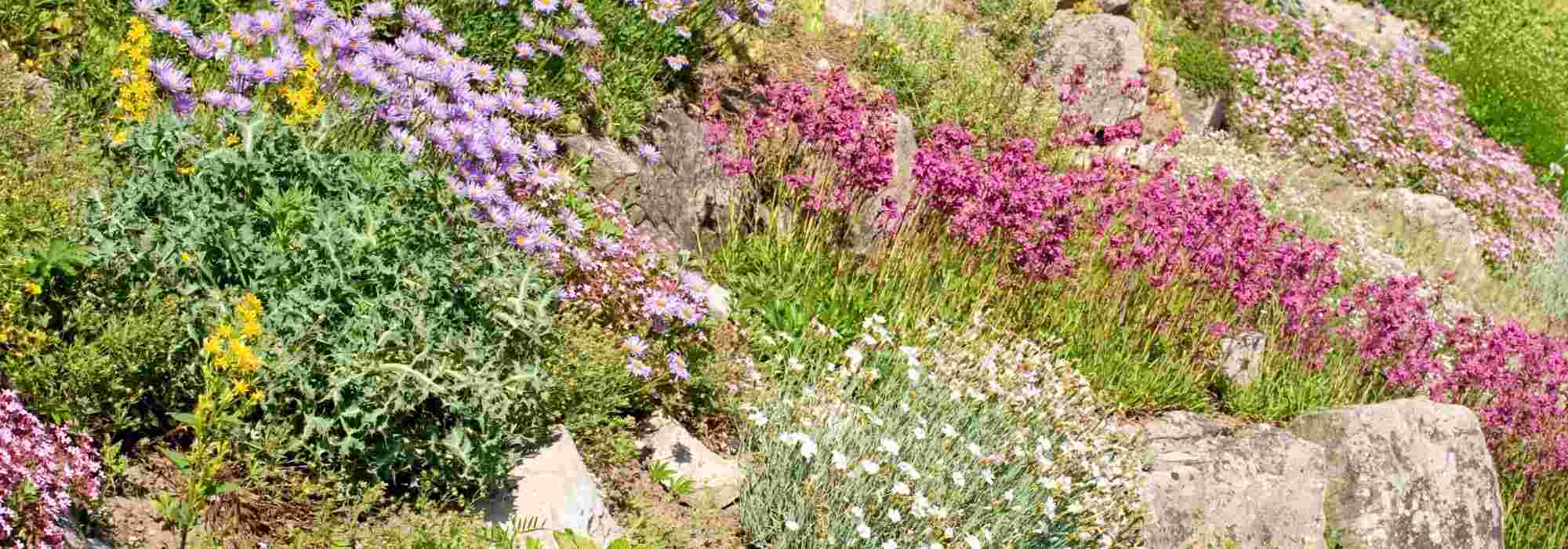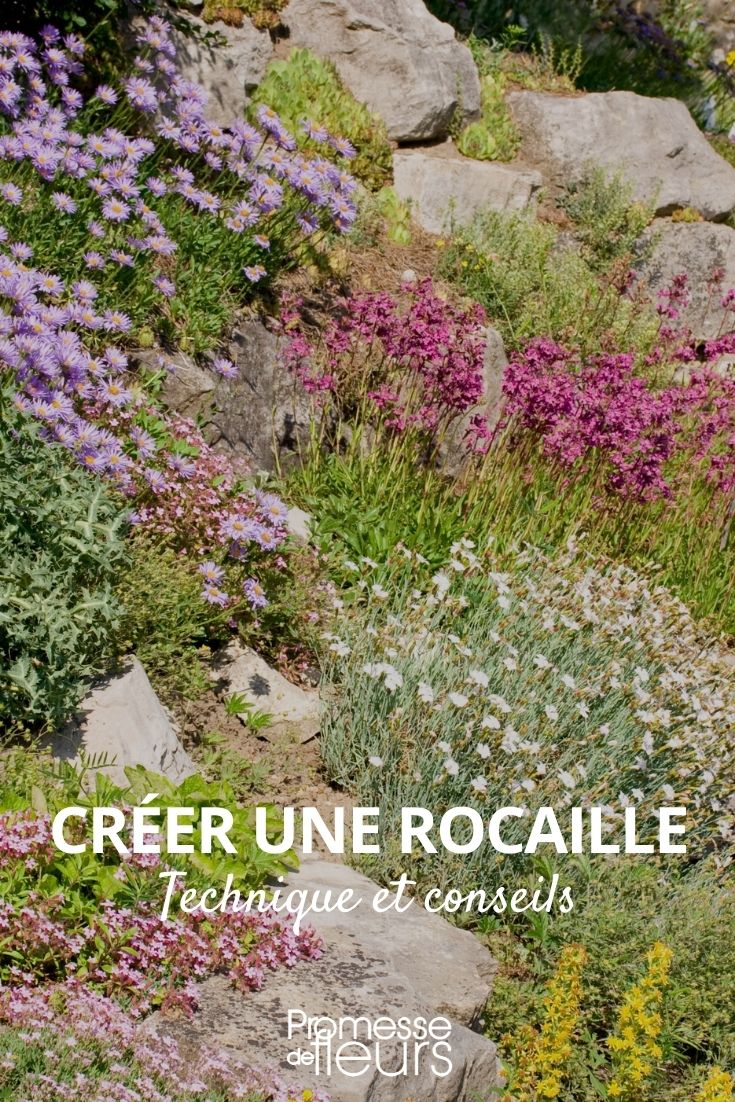
Creating a rock garden: our video transcription
Tips, tricks, and plant selection
Contents
In this video, Michael Le Bret from the Coudray garden in France explains how and why to create a rock garden. The installation of a rock garden is ideal in humid regions. The aim is to create levels and elevate the plants to provide them with well-drained soil. This way, you can grow plants for dry soil, such as cacti, sedums, or androsaces, and even mountain plants.
Why creating a rockery in your garden?
“The rockery really replicates conditions found in mountainous areas and warm, dry environments.”
We are in a rockery, so it’s already a bit more rugged. There is a slope. There is relief. This is the essence of a rockery. It’s ideal for growing mountain plants, even in Normandy. A rockery is not a flat garden feature. If you want to grow mountain plants in a region where it rains a lot in winter or where the soil remains moist, you must elevate the plants to provide them with well-drained soil. This is really the foundation of rockeries: elevate to drain!
Read also
15 plants for a sunny rockeryHow to create a rock garden?
It’s not complicated: to raise the ground, you need to create mounds. To create these mounds, and to prevent water from draining away too quickly, we will block the soil with rocks. The first step is to dig a trench and then place large rocks to hold back the soil.
We will bury the rocks two-thirds of the way to ensure they don’t become dislodged. The idea is to interlock them so that the pressure from the soil is evenly distributed across the entire rockery. Subsequently, we will fill in with soil. Ideally, this should be local soil, but mixed with draining materials, such as minerals: mainly pebbles, gravels of various sizes, and even sand to maximise drainage. Thus, when it rains, thanks to the sloped terrain, the water will flow to the lower part of the rockery. This will create different environments.
What to plant in a rockery?
Thus created, the rockery can accommodate “rock garden plants” that thrive in heat and well-drained soil, such as lavender, sages, helichrysum, euphorbias, santolines… Perennials, of course, but also shrubs like Hebe or Poncirus trifoliata for larger rockery beds. All the plants we plant in elevation are drought-tolerant species.
But the second advantage of rocks is that we can plant in the crevices, other plants suited to even drier conditions: certain sedums, orpins, houseleeks, saxifrages, androsaces… and even cacti or succulents (fat plants).
Indeed, in full sun, the rock will also act as a heat accumulator during the day and release it at night, which provides a few extra degrees in winter for plants planted close to the rock.
Thanks to a rockery, one can therefore cultivate a multitude of mountain and Mediterranean plants in their garden.
- Subscribe!
- Contents
































Comments